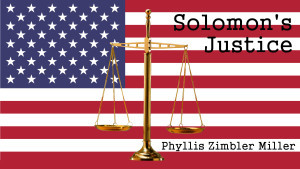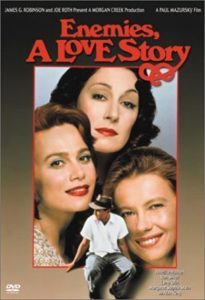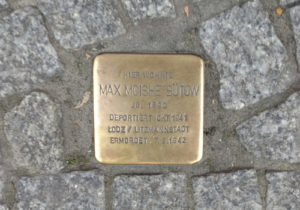Phyllis Zimbler Miller's Blog: Phyllis Zimbler Miller Author, page 10
January 31, 2017
U.S. Deploying Tanks to the Baltics

The announcement of the U.S. deploying tanks to the Baltics appearing as a one-paragraph announcement in the January 31, 2017, print Wall Street Journal “World Watch” led me to the Journal’s online article “U.S. to Deploy Tanks to the Baltics” by Julian E. Barnes in Brussels and Drew Hinshaw in Warsaw (with contributions from Juris Kaža in Riga, Latvia). The article’s subhead states “Latvia, Estonia and Lithuania are to receive the tanks, a signal that Washington remains committed to their defense.”
The article begins:
The U.S. Army will send tanks this week to countries on Russia’s frontiers in the largest such deployment since the Cold War, a step aimed at reassuring America’s European allies that Washington remains committed to their defense.
After joint U.S.-Polish exercises in northern Poland on Monday, some of the M1A2 Abrams main battle tanks used in the drills will be transported to the Baltic states of Latvia, Estonia and Lithuania, where they will remain until a new North Atlantic Treaty Organization deterrent force is operational in the spring.
I am particularly interested in the apparent “heating up” of a new Cold War in Eastern Europe because my husband Mitch and I were stationed in Munich, Germany, from September 1970 to May 1972 as part of the U.S. Army’s defense of Western Europe from possible Soviet invasion. Mitch was an officer in the 18th Military Intelligence Battalion and I eventually got a security clearance and worked for the 66th Military Intelligence Group.
Living under the threat of Soviet tanks rolling into West Germany from East Germany required various military requirements, such as keeping our car’s gas tank half full so that we could presumably evacuate if the Soviets invaded. I have detailed these experiences in my Cold War memoir TALES OF AN AMERICAN OCCUPYING GERMANY available to be read for free on Wattpad at http://budurl.com/TAintro
I am also personally interested in what happens in Latvia. My maternal grandmother for whom I am named was born in Viski, a village in Latvia. My cousin Bruce Dumes made a website about Viski — see http://kehilalinks.jewishgen.org/Viski/ — and emailed me about Viski “ … where our family lived from at least the early 1800s until they came to America. Domashi was a village in Belarus ( no longer there) from whence our name allegedly came. When they were assigning names, those originally from Domashi became Dumesh. That was in the 1840s or so.”
The Journal article details the U.S. troops and equipment sent to the Baltics:
Based in Fort Carson, Colo., the 3rd Brigade arrived in Bremerhaven, Germany, in early January with about 3,500 soldiers, 144 Bradley fighting vehicles, 87 tanks and 18 Paladin artillery systems.
The brigade will be stationed in Europe, with a headquarters in Poland, for the next nine months, after which it is to be replaced by another unit. During its deployment, elements of the brigade will also be sent to Hungary, Poland, Germany and Romania.
The U.S. has also boosted its European presence by building up stocks of equipment, increasing the number of helicopters and deploying 900 additional combat-support soldiers.
With all the other turmoil involving the U.S. on the international scene, it is still important that the U.S. continue its commitment to protect European countries from the menace of Russia. We should not take our eyes off this particular ball.
© 2017 Miller Mosaic LLC
Phyllis Zimbler Miller (@ZimblerMiller) has an M.B.A. from The Wharton School and is the author of fiction and nonfiction books/ebooks. Phyllis is available by skype for book group discussions and may be reached at pzmiller@gmail.com
Her Kindle fiction ebooks may be read for free with a Kindle Unlimited monthly subscription — see www.amazon.com/author/phylliszimblermiller — and her Kindle nonfiction ebooks may also be read for free with a Kindle Unlimited monthly subscription — see www.amazon.com/author/phylliszmiller
January 17, 2017
Why My Fantasy Novel Has No Magic

Fantasy adventure story featuring sword-wielding Leeze am Holden.
I am expanding my fantasy adventure story ROAD TO ZANZICA into a full-length fantasy novel. Yet I will continue to avoid using magic in the adventures of Leeze am Holden. Why?
I am committed to portraying a strong female action protagonist utilizing the same mental and physical abilities as a male action protagonist and not relying on magic to help her in difficult situations. Yet ROAD TO ZANZICA is still a fantasy story even without magic.
The adventures take place in a fictional location in a Middle Ages-inspired setting. Leeze am Holden wields a sword and wears male garb when needed (otherwise she wears the long dresses of the imaginary time period). There are word terms and rituals created just for this story as well as a class of aristos that Leeze unexpectedly joins.
Of course there are also numerous circumstances that threaten Leeze and her new companions. Plus Leeze must deal with underlying romantic tension after overnight becoming the widow of Perth am Machal’s brother.
I am influenced by the fantasy stories I have read with both female and male protagonists as well as the Regency romance novels of Georgette Heyer. Yet I always keep in mind that fictional characters can impact real life perceptions. I want young woman to believe that they can take control of their own destinies rather than waiting for a “knight in shining armor” to rescue them.
And yes, with an eye to future action figures, I have designed sword-wielding attire for Leeze.
In addition, I have added one major fantasy element — there is a prophecy that may refer to Leeze. Is she indeed to inherit the landholdings of the lord who may have murdered her father?
I am now serializing ROAD TO ZANZICA on the free site Wattpad. Click here to begin reading the adventures of Leeze am Holden and do share her adventures via social media with your friends.
© 2017 Miller Mosaic LLC
Phyllis Zimbler Miller (@ZimblerMiller) has an M.B.A. from The Wharton School and is the author of fiction and nonfiction books/ebooks. Phyllis is available by skype for book group discussions and may be reached at pzmiller@gmail.com
Her Kindle fiction ebooks may be read for free with a Kindle Unlimited monthly subscription — see www.amazon.com/author/phylliszimblermiller — and her Kindle nonfiction ebooks may also be read for free with a Kindle Unlimited monthly subscription — see www.amazon.com/author/phylliszmiller
January 6, 2017
Halston Heritage Attire Inspiration for Fantasy Adventure Character Garb

Inspiration for Leeze am Holden’s sword-wielding garb in ROAD TO ZANZICA
I was rewarded for my trip to the Apple store at the Beverly Center mall near Beverly Hills by spotting an outfit that could be the basis for the garb of my female sword-wielding protagonist Leeze am Holden in my work-in-progress fantasy adventure ROAD TO ZANZICA.
Leeze lives in a non-specified time period similar to the Middle Ages, and until her father is murdered on the road to Zanzica she is stuck with to-the-floor female dress garb.
Yet when her father can no longer deliver to Zanzica the annual tax allotment for the family’s landholding, Leeze must don male garb for safety on the road to Zanzica. Fortunately, her father has been teaching her sword fighting since she reached five star cycles, so she is prepared to wield a sword on her journey.
My interest in coming up with appropriate garb that fantasy fans might like to wear was inspired by reading about Ashley Eckstein and her fan-inspired clothing line Her Universe as well as her new venture Her Universe Press.
In ROAD TO ZANZICA when dressed in male garb Leeze starts off with plain wool pants and an unadorned wool tunic over which she wears a hooded wool cloak. Later her new acquaintance — Jordan, Lord am Wagreth — gives her a leather tunic for better protection when wielding her sword.
And voila! Walking past the Halston Heritage store window in Beverly Center I saw a two-piece garment that matched my ideal garb for Leeze (with a few adjustments).
Replacing the Halston Heritage garment material with leather, adding long sleeves for protection, and changing the belt to a sword belt, I have the basic inspiration for Leeze am Holden’s sword-wielding garb. (There will be slits under the arms for ease of sword handling.)
As Leeze rides horses, hence the slits on the side of the long garment (the length is needed for protection in sword fighting) and the overlapping fabric in front — held in place by the necessary sword belt — allows easier on and off access of the tunic than would buttons, ties or toggles of any kind.
Leeze’s leggings could be wool with reinforced leather on the inside of her thighs, or all leather. And of course her short blade is stashed in one of her boots. Her father’s belt, which plays an integral part in the mystery Leeze must solve, is worn under her sword belt.
Sign up below to receive news about ROAD TO ZANZICA:
© 2017 Miller Mosaic LLC
Phyllis Zimbler Miller (@ZimblerMiller) has an M.B.A. from The Wharton School and is the author of fiction and nonfiction books/ebooks. Phyllis is available by skype for book group discussions and may be reached at pzmiller@gmail.com
Her Kindle fiction ebooks may be read for free with a Kindle Unlimited monthly subscription — see www.amazon.com/author/phylliszimblermiller — and her Kindle nonfiction ebooks may also be read for free with a Kindle Unlimited monthly subscription — see www.amazon.com/author/phylliszmiller
December 8, 2016
Compelling Experience at Illinois Holocaust Museum

The Illinois Holocaust Museum’s book IN OUR VOICES looks at the Holocaust from the perspectives of eight Holocaust survivors. Their stories stretch from Uzbekistan to Paris, from Israel to the United States — and each of these survivors ended up in Skokie, Illinois.
I have just had the opportunity of visiting the Illinois Holocaust Museum in Skokie, Illinois. The museum is wonderfully curated with a logical progression of very informative exhibits. And seeing six busloads of Chicago-area students touring the museum was very heartwarming.
Yet perhaps the most compelling experience I had at the museum was coming across two young men supervising the audio guide desk and speaking German to each other. What could this mean I wondered?
The two young men explained that they were interns from two separate organizations. The young man from Frankfurt was an intern through the auspices of the (German) Action Reconciliation Service for Peace while the young man from Vienna was an intern through the auspices of the Austrian Holocaust Memorial Service and his internship was in place of his mandatory military service in Austria. To say I was shocked is quite an understatement.
Let’s pause for a moment to review history. As some of you know, I am working on a Holocaust film project THE RED LETTER, which partly takes place in Vienna and surrounding areas after World War II. Thus I have been reviewing Austria’s eager participation in the Nazis’ “Final Solution of the Jewish Question.”
To sum up Austrian Nazi history in a very simplified list:
Germany “annexed” Austria in March 1938 (called the Anschluss and defined by Wikipedia as “ the Nazi propaganda term for the annexation of Austria into Nazi Germany in March 1938”). The Austrians welcomed with open arms the Nazi troops that marched into the country and then the Austrians participated in the Nazis’ systematic robbing and killing of Austria’s Jewish citizens.
Germany started World War II on September 1, 1939, by an unprovoked attack on Poland.
After the Germans surrendered in May 1945, Austria was occupied by the Allies until 1955.
In my personal study of the Holocaust I have found that Germans were more willing than Austrians to admit their participation in the Final Solution. So for me to learn that the Austrian government allows service in Holocaust-related organizations instead of mandatory military service is truly incredible.
The Austrian Holocaust Memorial Service website states:
For more than fifteen years the Republic of Austria has had a unique program of international reconciliation called the Austrian Memorial Service (Gedenkdienst). Under this program young Austrians can serve — in lieu of military service — in organizations focused on Holocaust remembrance.
The Austrian Holocaust Memorial Service was launched in 1991 by Andreas Maislinger, who served as a volunteer at the Auschwitz-Birkenau Museum in Poland and adopted the idea from the German Initiative for Reconciliation (Aktion Suehnezeichen).
The Action Reconciliation Service for Peace (Aktion Suehnezeichen) website states:
For over 50 years ARSP has been committed to working toward reconciliation and peace, as well as fighting racism, discrimination and social exclusion.
Today, these aims are continued and realized through the long-term international peace service program. This is known as peace service because, in co-operation with our partners, volunteers develop their understanding of history and other cultures and societies, whilst experiencing and accepting different patterns of thought and behavior.
Nowadays, due to generational change, ARSP volunteers do not act from a feeling of personal guilt, but rather from the conviction that they want to make a positive contribution toward a more peaceful, just and tolerant world. Every year around 180 volunteers, mostly aged between nineteen and twenty five are active for ARSP in thirteen different countries on a variety of educational, historical, political and social projects.
In conclusion, my chance meeting of these two German-speaking young men was as encouraging for an optimistic future of humanity as was the six busloads of Chicago-area students visiting the Illinois Holocaust Museum.
Click here to learn more about the Illinois Holocaust Museum.
Click here to read about the historical screenplay project THE RED LETTER.
© 2016 Miller Mosaic LLC
Phyllis Zimbler Miller (@ZimblerMiller) has an M.B.A. from The Wharton School and is the author of fiction and nonfiction books/ebooks. Phyllis is available by skype for book group discussions and may be reached at pzmiller@gmail.com
Her Kindle fiction ebooks may be read for free with a Kindle Unlimited monthly subscription — see www.amazon.com/author/phylliszimblermiller — and her Kindle nonfiction ebooks may also be read for free with a Kindle Unlimited monthly subscription — see www.amazon.com/author/phylliszmiller
November 2, 2016
Mixed Feelings About New Amazon Original Series GOOD GIRLS REVOLT

Watching the new Amazon original series GOOD GIRLS REVOLT about the staff at the fictional News of the Week magazine is both enjoyable and emotional for me. The series begins in 1969, and episode 5 is New Year’s Eve ushering in 1970. (The fictional series is based on the nonfiction book THE GOOD GIRLS REVOLT: HOW THE WOMEN OF NEWSWEEK SUED THEIR BOSSES AND CHANGED THE WORKPLACE by Lynn Povich.)
The enjoyable parts of the series for me revolve around relating to the hair styles, clothes, consciousness raising, and the learning about women’s sexuality — all of which I experienced at that time. The emotional parts of the series revolve around contemplating the treatment of women then and now.
The consciousness raising for women and the anti-women treatment in the news room I experienced starting in 1972 when my husband Mitch and I got back from being stationed in Germany with the U.S. Army. Earlier, while Mitch was in the Army, I experienced the prejudice against women having professional jobs.
For all the supposed changes in the past 46 years, many things still remain the same for women. And although people could point out how slowly some things change throughout recorded history, the equal treatment (and equal pay) of women should not be one of those areas that changes so slowly since the 1960s.
I personally try to do my part in improving the perception of women. This started when I taught news writing courses at Temple University Center City in the mid-70s. I tried to change both male and female students’ perception of women because these perceptions influenced how the students wrote about women. I even had a collection of insulting women references in newspaper articles at the time, including articles from the front page of The Wall Street Journal. (I still remember the reference to “the blond” in an article about the Panama Canal.)
Then in my fictional writing as well as my blog post writing I try to portray strong roles for women. This is very important because I believe that many people do not perceive the difference between reality and fiction. A woman pilot in real life or in fiction can equally encourage other women to consider becoming a pilot.
The ongoing “put down” of women still happens all around us. One has only to look at advertising to see discriminatory gender portrayals — and video games may be some of the worse perpetrators of negative female images. Really, do all the women characters have to wear skimpy outfits?
Today I saw a billboard on the side of a bus advertising the new TV show PITCH, which is about a female pitcher in the major leagues. She is portrayed in the billboard in a skimpy top so that her breasts are accentuated. How shameful that a series which could actually help promote the acceptance of women in professional sports still uses a “sexy” photo to advertise the show.
In conclusion, I recommend watching GOOD GIRLS REVOLT on Amazon, and then considering whether — 46 years from 1970 — have we women really gotten that much farther than we were then?
Click here to read for free via Kindle Unlimited my fiction stories with strong female protagonists.
© 2016 Miller Mosaic LLC
Phyllis Zimbler Miller (@ZimblerMiller) has an M.B.A. from The Wharton School and is the author of fiction and nonfiction books/ebooks. Phyllis is available by skype for book group discussions and may be reached at pzmiller@gmail.com
Her Kindle fiction ebooks may be read for free with a Kindle Unlimited monthly subscription — see www.amazon.com/author/phylliszimblermiller — and her Kindle nonfiction ebooks may also be read for free with a Kindle Unlimited monthly subscription — see www.amazon.com/author/phylliszmiller
October 28, 2016
Déjà Vu: Cold War Heating Up

Thomas Grove’s October 25, 2016, Wall Street Journal article “Russians Conduct Nuclear-Bomb Survival Drills as Cold War Heats Up: Bomb shelters are upgraded, gas masks tested amid strained relations between Putin and U.S.” announced a topic with which I am quite familiar.
The article begins:
MOSCOW—Russian authorities have stepped up nuclear-war survival measures amid a showdown with Washington, dusting off Soviet-era civil-defense plans and upgrading bomb shelters in the biggest cities.
At the Kremlin’s Ministry of Emergency Situations, the Cold War is back.
The country recently held its biggest civil defense drills since the collapse of the U.S.S.R., with what officials said were 40 million people rehearsing a response to chemical and nuclear threats.
From September 1970 to May 1972 my husband and I were stationed with the U.S. Army in Munich where we lived under the threat of the Russians marching into West Germany. To explain what this meant in those days (and possibly again now for U.S. troops in Germany), below is a September 30, 1970, excerpt from my Cold War memoir TALES OF AN AMERICAN OCCUPYING GERMANY:
“You can be assured that US military commanders have plans to protect the safety of US civilians overseas during any emergency just as we have civil defense plans for the safety of our friends and relatives back home.” Noncombatant Evacuation Order (NEO) issued 14 July 1970, Support District Sud Bayern [South Bavaria]
I sat in a classroom at McGraw Kaserne with other women whose husbands — both officers and enlisted men — had recently joined the 66th Military Intelligence Group or the 18th Military Intelligence Battalion.
As dependents we were being given an NEO — Noncombatant Evacuation Order — briefing on what to do in case the Russians march into West Germany or set off a nuclear bomb in West Germany.
The sergeant conducting the briefing passed out booklets for each of us. Then he said, “This information is passed out on a need to know basis. You must remember that disclosures of the plans for evacuation to unauthorized persons could jeopardize your safety and the safety of others in the event of an emergency. This information is not classified, but it is not a matter for discussion with your maid, the children, in letters to the folks back home, or at social gatherings.”
I listened in amazement as the sergeant continued: “Also, it would be wise to keep these instructions and all other documents relating to the evacuation in a secure place where they will not be readily accessible to the children or some unauthorized person. A small box with a lock would serve admirably.”
Now the sergeant detailed various aspects of the evacuation plan. He said, “You should in any event dress for comfort and warmth. For women, slacks and low-heeled shoes are recommended.”
The sergeant smiled as he said this. Did he really think women being evacuated would dress as if going to a party?
“At all times your car should be ready, in good repair, with sound tires, and at least one-half tank of gasoline.”
The sergeant told us that each person was allowed 45 pounds of luggage. I envisioned each one of us with her 45 pounds of luggage trying to get to safety while our German neighbors poured out of their homes to see what was going on.
The sergeant described the following documents that we would need:
1. Automobile title document (AE Form 89)
2. Emergency allotment authorization form (DD1337)
3. Two ID tags (dog tags) per person
4. One passport for each person
5. Seven USA Control Cards (AE Form 388) per person
In addition, we would need:
1. Enough food to last each person for two days &dquo; and don’t forget the younger children and infants.
2. Two blankets per person.
3. Water purification tablets.
And there was more:
1. Toilet and facial tissue.
2. Flashlight and extra batteries.
3. First aid kit
4. Thermos jug.
5. Small transistor radio with extra batteries.
The sergeant continued:
The Soviets and Soviet Bloc countries have an army of undercover agents here in Germany and in other NATO countries. Some of these people are real professionals, but most of them are not. All of them are making money by selling information to the Communist nations. One target for espionage agents is the American housewife. You would be surprised how much information of a military nature can be pieced together from what most people would consider to be just harmless gossip.
You can help your country by being security conscious. Do not talk to anybody, especially strangers, about your husband’s job, his unit, when he is going to the field, what he thought of a maneuver he has been on, or, in short, anything at all about military matters. Communist agents have long ears and they are extremely interested in listening to you talk.
There is even a chance you might be approached by some of these agents posing as salesmen, census personnel, or even government agents. Always require identification from anyone who approaches you. If anyone refuses, you should immediately notify your husband. If he is not home or at his unit, then call the Military Police.
The sergeant gave us each a sheet titled “IF YOU STRAY ACROSS INTO COMMUNIST TERRITORY” and read from it:
In peacetime USAREUR [United State Army Europe] personnel who are lost, detained, or otherwise isolated in the Union of Soviet Socialist Republic, East Germany, the Soviet section of Berlin, or satellite countries should do the following:
1. If you are ever lost or otherwise isolated, you should first attempt to avoid apprehension and set out without resorting to action that could be interpreted as being suspicious or illegal.
2. If you are apprehended, then give them only your name, ID card number, and date of birth; then inform them that you desire to be returned to U.S. Military control and your entry into the area was inadvertent.
3. Always remember you are not allowed to cross borders, except for sanctioned travel. Also you should try, by all means, to avoid apprehension and get home.”
Stray into Communist territory? How was that suppose to happen? I wondered.
Since Mitch had a security clearance and was an Military Intelligence officer, Mitch and I weren’t even allowed to take leave in Eastern European Communist countries or go into East Berlin as other American soldiers could do wearing their uniforms.
Mitch and I also couldn’t take the duty train to West Berlin and instead had to fly so as not to possibly be kidnapped. And in Berlin we could only take the West Berlin subway and not the East Berlin subway that ran through West Berlin in case the subway should not let us off in West Berlin but carry us across into East Berlin.
At least we didn’t have to put all the personal mail sent to us in “burn” bags as did Military Intelligence officers stationed in Berlin. Here in Munich we were allowed to throw into the trash our letters from home. On the other hand, Mitch and I jokingly told each other to “speak into the chandelier” hanging over our dining room table. We were sure the Russians had a listening device in the chandelier in every army housing unit.
The sergeant also handed out a sheet titled “AIR RAID WARNING SIGNAL SYSTEM” that included information on three types of warnings, their meanings, signals and actions. The first type was an “air raid warning” for “air raids, nuclear” — the signal “a rising and falling (warbling) one minute in duration.” We were to “proceed in an orderly manner down the stairs. Walk, do not run, to the basement and disperse in one of the side rooms. Be sure you take your overcoat or other outer garments with you.”
The second warning was a “CBR warning” for “radioactive fallout or employment of biological and/or chemical agents” — the signal “a twice interrupted rising and falling (warbling) siren signal of one minute’s duration.” We were to “proceed in an orderly manner down the stairs. Walk, do not run, to the basement and disperse in one of the side rooms. Be sure you take your overcoat or other outer garments with you. Remain in basement room until physically contacted by a member of an Atomic survey team or CBR team and follow their instructions.”
The third was the “all clear signal” at the “end of imminent danger” — “a continuous siren signal one minute duration.” And of this we were to “REMAIN CALM: Dependents return to apartments, personnel return to duty station and await further instructions.”
Now the sergeant smiled. Apparently the NEO briefing was over. “Remember now,” he said, “you must do your part, both in being ready yourself, and insuring that you are provided for by the authorities. If an emergency should arise, your cheerful cooperation will make everyone’s job easier, and insure success with a minimum of trouble.”
I stared at the sergeant. Did he truly believe was he was saying? He must know that, in case of an attack by the Russians, all hell would break out — the chances of survival slim with all Munich stampeding to join the Americans in getting out of town.
© 2016 Miller Mosaic LLC
Phyllis Zimbler Miller (@ZimblerMiller) has an M.B.A. from The Wharton School and is the author of fiction and nonfiction books/ebooks. Phyllis is available by skype for book group discussions and may be reached at pzmiller@gmail.com
Her Kindle fiction ebooks may be read for free with a Kindle Unlimited monthly subscription — see www.amazon.com/author/phylliszimblermiller — and her Kindle nonfiction ebooks may also be read for free with a Kindle Unlimited monthly subscription — see www.amazon.com/author/phylliszmiller
October 6, 2016
GeneTestNow.com Initiative

I was a reporter and editor for the Jewish weekly newspaper the Jewish Exponent in the early 1970s when the first screenings for the Jewish genetic disease Tay Sachs were offered. My husband and I joined others in being tested, and the Exponent carried numerous stories of the fatal prognosis of a Tay Sachs child.
In the years since then many, many more genetic diseases can be screened for, and it is important that prospective parents undergo these tests. (I wrote about genetic screening including for the condition of Fragile X Syndrome — not a specifically Jewish genetic disease — in my previous blog post “Genetic Screening During Pregnancy.”)
Now during Rosh Hashanah synagogue services for the Jewish new year a friend handed me the September 30th issue of the Los Angeles weekly newspaper the Jewish Journal. The issue included a full-page ad about GeneTestNow.com with the headline “A Message From Your Local Rabbis About the Importance of Gene Testing in Our Community”
The GeneTestNow.com ad begins:
As rabbis, we are concerned about the complete health of our communities — spiritual as well as physical. So we are heartened that more and more people are learning about the importance of gene testing.
Since GeneTestNow.com — a free, locally based nonprofit founded by concerned members of our community — was launched four years ago, there have been significant strides in this grassroots effort to spread awareness and education about gene testing.
Later in the GeneTestNow.com ad is this important sentence:
For couples with any degree of Jewish ancestry, screening for the portion of the 40 potential conditions specific to your Sephardic, Ashkenazi, Persian, or North African Jewish heritage is imperative.
I would hope that this initiative is being implemented in Jewish communities throughout the world as well as encouraging screening for non-Jews for other genetic diseases.
At the moment I’m figuring out how to include GeneTestNow.com as part of the story in the cozy mystery SINK LIKE A STONE that I’m currently writing. Even fiction is an avenue for getting out the word about important medical concerns.
In this Jewish new year of 5777 I wish everyone a year of good health and success. GeneTestNow.com is an important platform for achieving that good health.
© 2016 Miller Mosaic LLC
Phyllis Zimbler Miller (@ZimblerMiller) has an M.B.A. from The Wharton School and is the author of fiction and nonfiction books/ebooks. Phyllis is available by skype for book group discussions and may be reached at pzmiller@gmail.com
Her Kindle fiction ebooks may be read for free with a Kindle Unlimited monthly subscription — see www.amazon.com/author/phylliszimblermiller — and her Kindle nonfiction ebooks may also be read for free with a Kindle Unlimited monthly subscription — see www.amazon.com/author/phylliszmiller
September 26, 2016
Where Are the TV Fictional Portrayals of Veterans in Daily Life?

It is fall TV season and I have been sampling some of the new drama shows. And as part of the sampling, I am noticing which fictional TV characters have backstories of being veterans.
The first episode of the new TV series LETHAL WEAPON mentions in passing that one of the two leads — Martin Riggs — is a former Navy Seal. In addition, one murder victim in the episode is identified as a Navy Seal.
Yet neither of these passing identifications does anything to acquaint Americans with what it means to be a veteran of our government’s military branches.
A recent TV Guide issue featured a photo-and-text spread about entertainment stars and the philanthropic causes they support. One such person featured is Dean Norris (THE BIG BANG THEORY and GIRL BOSS), who supports the Wounded Warrior Project.
Although I know that currently there are some questions about the Wounded Warrior Project, what I am interested in is Norris’ commitment to our veterans. Here is a quote from the last paragraph of the one-page article on him (last sentence boldfaced by me):
Many who have served our country now have psychological issues. Suicide is a big problem. What I’d really love is for more people to be aware of veterans on a daily basis.
And that quote about more people being aware of veterans on a daily basis is what stood out for me. Such a small percentage of Americans today serve in the military that the military life is often foreign to those who have no personal military knowledge.
This is where fictional TV shows can fill in the gaps, displaying veterans and active duty military personnel in settings that illuminate their lives.
(I have emailed Dean Norris’ agents at CAA in the hope that they will put me in touch with Norris so that I can discuss with him my two proposed veteran TV projects.)
Here is a scene from my short story SOLOMON’S JUSTICE, which is adapted from my pilot script for a TV drama of the same name:
Spencer Beaumont sat on the ground under a Los Angeles freeway underpass. He was sharing some grub out of a mess kit with a younger man dressed the same as Spencer — wearing a filthy Army jacket over a dirty t-shirt and ragged jeans.
“Gotta get cleaned up — have to go to court tomorrow,” Spencer said.
“You in trouble again?” the young man asked. “I thought you served your time.”
Spencer nodded as he shoveled food into his mouth. “I’m gonna see my buddy being called up in front of a veterans court. Something new. Gives vets who commit felonies a chance to get rehabilitated.”
“Could you have done that?”
“Don’t know. Didn’t have the chance.”
Yes, there is now a real-life Los Angeles County Veterans Court, and it is an incredible legal institution for helping our veterans. The fictional portrayal of such a real-life institution could inspire other jurisdictions to set up their own veterans courts.
Fictional TV shows displaying veterans in everyday life, including going to veterans court, could make more people “aware of veterans on a daily basis.”
Click here to read the short story SOLOMON’S JUSTICE for free on Wattpad.
Or click here to get it for your Kindle.
Contact me at pzmiller@gmail.com if you are interested in discussing the proposed TV drama SOLOMON’S JUSTICE or the proposed reality show HEALING OUR HEROES. (See more info on both at www.SolomonsJustice.com)
© 2016 Miller Mosaic LLC
Phyllis Zimbler Miller (@ZimblerMiller) has an M.B.A. from The Wharton School and is the author of fiction and nonfiction books/ebooks. Phyllis is available by skype for book group discussions and may be reached at pzmiller@gmail.com
Her Kindle fiction ebooks may be read for free with a Kindle Unlimited monthly subscription — see www.amazon.com/author/phylliszimblermiller — and her Kindle nonfiction ebooks may also be read for free with a Kindle Unlimited monthly subscription — see www.amazon.com/author/phylliszmiller
September 13, 2016
Does It Have to Be the Holocaust?

In my family when I start talking about something to do with the Holocaust, I invariably get the response “Does it have to be the Holocaust?” (usually accompanied by a groan). The comment is a reference to the anecdote from years ago about a major Hollywood studio exec (who shall be unnamed) asking that same question about the movie adaptation of Isaac Bashevis Singer’s book “Enemies, a Love Story.”
(If you have any doubt whether “Enemies, a Love Story” is about the Holocaust, here is a description of the movie version of the book from Amazon: “Herman Broder is a Holocaust survivor in postwar New York, wed out of gratitude to the peasant woman who hid him from the Nazis. He carries on a mad affair with a concentration camp survivor, only to find out that the snappish wife he thought had died in the war is miraculously alive.”)
Now in fairness I have several connections to the Holocaust even though I grew up in a small Jewish community in the Midwest where almost everyone’s parents or grandparents had come from Eastern Europe (Russia, Poland, Latvia, Lithuanian, etc.) around the turn of the 20th Century:
My husband and I were stationed in Munich with the U.S. Army from September 1970 to May 1972. During that time, among other events, a Waffen S.S. unit had a reunion near us and the Anne Frank House in Amsterdam almost closed due to lack of funds.
When we were back in the U.S. I became the editor of the monthly literary magazine of the weekly Jewish Exponent newspaper in Philadelphia. During my six years there I published the firsthand accounts of many Holocaust survivors as well as writing reviews of nonfiction books about the Holocaust. I also had the privilege of personally interviewing such people as the French Nazi hunter Beate Klarsfeld.
I recently had lunch with a friend — a Jewish woman whose mother and grandmother got out of Germany before being murdered — and she believes that in 50 years the Holocaust will be forgotten in the U.S.
Whether she is right, I feel a personal responsibility to share information about the Holocaust — see my blog post “THE RED LETTER Screenplay: The One-Man Quest of a Nazi Hunter” and my blog post “Remembering the Non-Jewish Victims Murdered by the Nazis” and my blog post “Reflections on Sept. 1 of 1939 and 2016.”
And I also want to mention the compelling documentary — GERMANS & JEWS — that looks at the relationship between Germans and Jews in today’s united Germany. (The documentary was especially meaningful to me because I had just been at several of the locations in Berlin shown in the documentary.) Click here to learn more about the documentary GERMANS & JEWS.
So my answer to the question “Does it have to be the Holocaust?” is “Yes, it has to be the Holocaust.”
© 2016 Miller Mosaic LLC
Phyllis Zimbler Miller (@ZimblerMiller) has an M.B.A. from The Wharton School and is the author of fiction and nonfiction books/ebooks. Phyllis is available by skype for book group discussions and may be reached at pzmiller@gmail.com
Her Kindle fiction ebooks may be read for free with a Kindle Unlimited monthly subscription — see www.amazon.com/author/phylliszimblermiller — and her Kindle nonfiction ebooks may also be read for free with a Kindle Unlimited monthly subscription — see www.amazon.com/author/phylliszmiller
September 5, 2016
Reflections on Sept. 1 of 1939 and 2016

Stolpersteine from Berlin with approximate translation: Here lived Max Moishe Butow, born 1890, deported October 1941 Lodz/Litzmannstadt, murdered March 7, 1942
On August 31 I returned from a trip to Frankfurt, Munich, and Berlin — the first time I had been in Germany since my husband and I left Munich in May of 1972 when my husband’s active duty commitment with the U.S. Army had been completed. When I arranged to return to the U.S. on August 31 rather than September 1, I was acutely aware that I was “getting out” of Europe before the gates slammed shut on September 1 (1939) when the Nazis invaded Poland with a fabricated provocation.
That awareness of the past in Germany was everywhere:
In Frankfurt
I learned how long Jews had lived in Germany when I visited the Museum Judengasse — a Jewish presence in Frankfurt since the mid-12th Century has been documented. And although the Jews of Frankfurt were forced into a ghetto in 1462, it appears that during the ghetto period there was much interaction between Jews and Christians. (To learn more about this fascinating museum see http://www.museumjudengasse.de/en/home/)
In Munich
I was surprised to learn that, although the Stolpersteine commemorative stones for murdered victims of the Nazis are now appearing in many European countries besides Germany, these stones are not widespread in Munich because the head of the Jewish community in Munich is against the stones. She reportedly believes that Jews have been stepped on enough and should not be stepped on again even as commemorative stones. Yet many people disagree with her position, believing that these stones are an important reminder of what can happen when an entire nation turns to the dark side.
Read at http://www.stolpersteine.eu/en/ about this “art project that commemorates the victims of National Socialism, keeping alive the memory of all Jews, Roma and Sinti, homosexuals, dissidents, Jehovah’s Witnesses and victims of euthanasia who were deported and exterminated.”
In Berlin
I last visited Berlin for a weekend in 1971 and, as my husband and I both had security clearances, we could not go into East Berlin then. Now the city is reunited and every part of the city is accessible.
This time I even took an English-guided tour of the Stasi Museum (see http://www.stasimuseum.de/en/enindex.htm) which reinforced how accurately my husband and I had portrayed the East German secret police in our screenplay THE WIDOW SPRINGER (see https://studios.amazon.com/projects/34025 on Amazon Studios).
Of course I visited the two memorials in Berlin that I wrote about in a previous post:
The first is the Memorial to the Murdered Jews of Europe designed by architect Peter Eisenman and engineer Buro Happold.
The second is the Memorial to the Sinti and Roma Victims of National Socialism designed by Israeli artist Dani Karavan.
One of the important sites in Berlin is the documentation center the Topography of Terror at the site of the SS and Gestapo headquarters. Here on large outdoor panels is traced the rise of the Nazis and the subjugation and murder of the victims. (There is also an indoor exhibition that I did not see.) Read more at http://www.topographie.de/en/
And of course there is the amazing Jewish Museum in Berlin (http://www.jmberlin.de/main/EN/homepage-EN.php). Here is a description of the museum from the architect Daniel Libeskind’s site:
The Jewish Museum Berlin, which opened to the public in 2001, exhibits the social, political and cultural history of the Jews in Germany from the fourth century to the present, explicitly presenting and integrating, for the first time in postwar Germany, the repercussions of the Holocaust. The new building is housed next to the site of the original Prussian Court of Justice building which was completed in 1735 [and] now serves as the entrance to the new building.
Daniel Libeskind’s design, which was created a year before the Berlin Wall came down, was based on three insights: it is impossible to understand the history of Berlin without understanding the enormous contributions made by its Jewish citizens; the meaning of the Holocaust must be integrated into the consciousness and memory of the city of Berlin; and, finally, for its future, the City of Berlin and the country of Germany must acknowledge the erasure of Jewish life in its history.
Yet for all the memorials to the victims that I saw in Germany, I can never forget that on September 1, 1939, the fate of six million Jews and so many more victims was sealed. NEVER AGAIN!

© 2016 Miller Mosaic LLC
Phyllis Zimbler Miller (@ZimblerMiller) has an M.B.A. from The Wharton School and is the author of fiction and nonfiction books/ebooks. Phyllis is available by skype for book group discussions and may be reached at pzmiller@gmail.com
Her Kindle fiction ebooks may be read for free with a Kindle Unlimited monthly subscription — see www.amazon.com/author/phylliszimblermiller — and her Kindle nonfiction ebooks may also be read for free with a Kindle Unlimited monthly subscription — see www.amazon.com/author/phylliszmiller
Phyllis Zimbler Miller Author
- Phyllis Zimbler Miller's profile
- 15 followers



